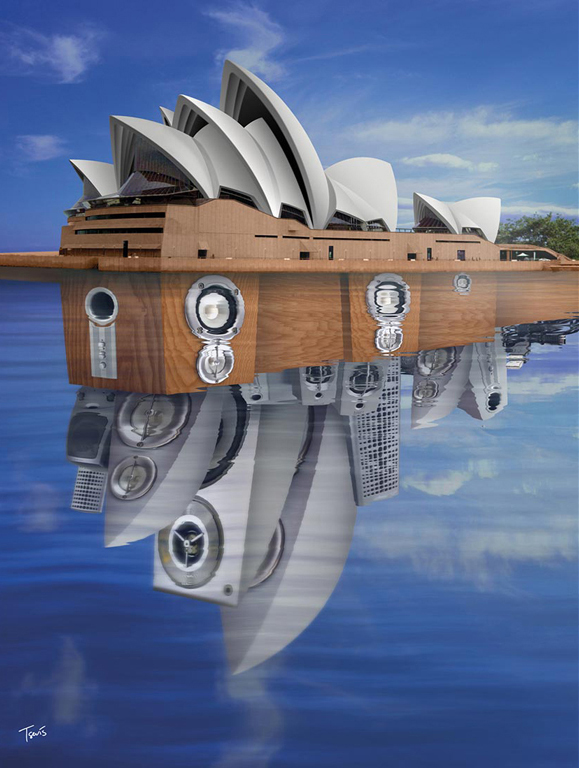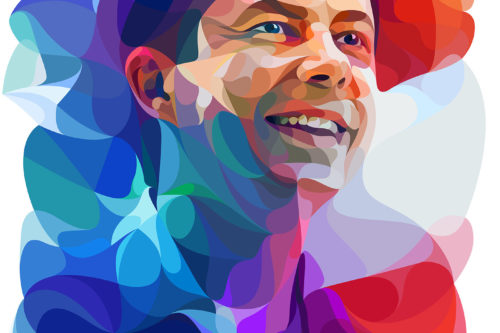A few days ago I attended a wonderful lecture by Charis Tsevis on the subject of “Fantasy”. I found the topic very powerful and valuable to share with you. A big thanks to Charis for sharing his notes so you can enjoy and be inspired by the message.
Fantasy
So, what is it about “fantasy” that makes singers sing about it, Greek Philosophers keep wondering and musicians compose about it? Plato refers to it as the image that human mind forms through the senses. Aristotle describes it as the act that generates in the mind from the senses. Chrysippus defines imagination as a passion. Passion created within the soul of man with sensory perception.
 |
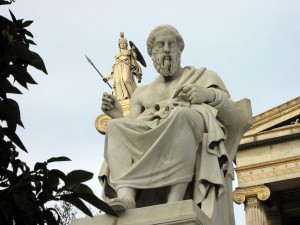 |
 |
| Aristotle | Plato | Chrysippus |
Whatever the interpretation, everyone agrees that fantasy originates in memory, they are affected by one another. Imagination is the amplitude of the mind. Contrary to this, physical memory function can stop the wanderings of the imagination. Is this the reason that as we get older we become more shallow? We lose the ability to imagine, and fall into the routine of rationality? Is this the reason why Albert Einstein said “Imagination is more important than knowledge.”? Zen Buddhists have a better theory. Is not the memory responsible for lack of imagination, but the Ego.
The Ego is the bulwark of knowledge. The more we shape our ego, the more we turn in ourselves and build walls around us to resist the overthrow of our knowledge. What we think we know and differs from our knowledge, seems illogical and therefore unacceptable. If we simply limit our Ego, if we only open ourselves to experimentation and testing, then we can travel our mind into an imaginary universe where all are possible and powerful.
Therefore, to succeed that, we need knowledge. What Albert Einstein thought less important, eventually is more important. Simply because, how your mind will imagine things without knowing them? Something easy to realize if we just ask you to draw an object. I asked my daughter, 7 years old to draw an apple. (img1). Then I asked her to draw an apple car and instead of wheels to add legs. (img2) She KNOWS how a car looks like an apple and legs. But when I asked her to draw for me a grgrggsgsgrg car? (img3). She couldn’t draw it, because she doesn’t know how a grgrggsgsgrg car look like.
 |
 |
| apple | apple-car |
Thus, we need the knowledge to stimulate our mind and start imagining. This also means that what we usually say about children, that have imagination, is wrong. We all have imagination. Children can even create many fewer combinations, and know a lot less.
 |
 |
| Kids draw from the book “Fantasia” of Bruno Munari. | Kids draw from the book “Fantasia” of Bruno Munari. |
Many deem that children as capable creators of imaginative images because they see the objects unrealistic paint. The reality is that children are not very creative. They are just free. They do not care whether what they create is feasible or not. And even more? Do not care if you criticize them for what they planned, unless we are more of them immature and scold. We lose our imagination as we care more about the criticism, the glory (with all the concepts, etc.).
But how does the fantasy functions?
To understand how the fantasy functions, creativity and ingenuity we need to see if it is possible to separate the functions that are in our minds when we place this data. The logic makes us sort of how we use information on specific logical relations.
 |
| Bruno Munari |
Here is the time to introduce you to Bruno Munari the ‘New Leonardo Da Vinci’ as Pablo Picasso once referred to him. Bruno Munari, just like Leonardo tackled everything and find interesting every conceivable subject, science and art, recording the results of his investigations and experiments.
Munari was the focus of controversy of those who argue that Art and Imagination is something magic, sacred and should remain inaccessible. He opposed those who claimed that a fictional work is the result of some secret chemical process the human mind does, and that can’t be explained and replicated. For him, imagination was another human capacity. And as such could be studied and recorded.
Fantasy enables us to think about something that was not there before, without limit, establishing connections between known things in order to create something new. [Bruno Munari, Fantasia, Laterza, Bari 1977] (http://www.munart.org/doc/bruno-munari-m-hajek-exact-fantasy-2008-en.pdf)
Munari explored the outer world through the ingenuity of logical functions. The man that is trying to understand the world and what is happening around him and is known for this purpose, uses the senses, sight, hearing, etc. As our senses are working alongside the intelligence is trying to classify the data coming into the brain from the senses.
According to Munari, everything gets noticed on the hard disk of our minds divided into 3 main folders/areas.
1. Short-term memory.
2. Long-term memory.
3. Genetic functions.
a. The short term is the RAM the cache of our mind. It is the information that is useful to us for a short time horizon. For example, a particular appointment that we have tonight at 8.30 pm, has no information value of 8.30 tomorrow.
b. The second term are all those skills we need to live better, to do things, to communicate to create.
c. In the genetic field finally found all the information and data to pass to future generations.
In his book (The Fantasy of 1977) Munari believes we can distinguish 12 functions in our minds when we place the data. Let’s look at them and see if we actually accept the notion that every human creation has fantasy touches, and can the notion be placed in the following:
1. The world upside down
One of the most common ways to create a fantasy is when reversing a known, an existing relationship. Man remembers for years a series of pairs of opposites. It is therefore the product of a courageous movement of the mind to reverse some of these relationships.
When the masters become slaves things change …
 |
| Popular Spanish lithographs from the book “Fantasia” of Bruno Munari. |
Very significant is the example of Marcel Duchamp who changed the placement of the ureter and he named it source.
As well as the small father and son big in Hollywood.
Talking about Hollywood in how many movies have we seen the flying saucer that comes in the night and chasing earth?
 |
| Form the movie “Close Encounters of the third kind” |
Although it’s a product of imagination it is based on a very realistic scenario and it’s perfectly feasible in terms of natural system of rules. But if instead the night flying saucer came in the day? What if instead of illuminating light to illuminate dark? This is a much more imaginative picture.
 |
| From the comic Dylan Dog of Tiziano Sclavi |
2. The proliferation of parties
The proliferation of parties is a classic recipe for producing fantasy images. The most common are fictional creations, the goddess with many hands, the dragon with 7 heads, or thousands of feet, etc.
 |
| Illustration from a popular magazine of 70s. Unknown designer. |
3. Change the color
Have you ever wondered why aliens are green?
Obviously to differ from us. If they had any of the human colors would be hard to consider them aliens. Sometimes they are blue or purple.
 |
 |
| Toy Story 2, Pixar & Disney |
4. Change the material.
This is in fact a variant of the first category, namely the world upside down and change color. We saw it before playing with apples. If we change the material it is made an object of fantasy. If something solid, changed to liquid or gaseous?
 |
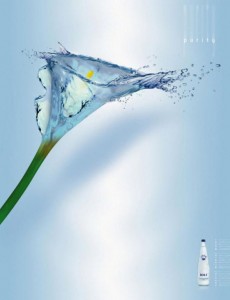 |
| Advertisement series of Greek bottled water Ioli by Spot JWT Athens | |
In Charis Tsevis work this function has stood very helpful. It was easy to fix with the help of technology from various other objects. The most mosaics are indeed nothing but an application of this category. We have items made of other objects.
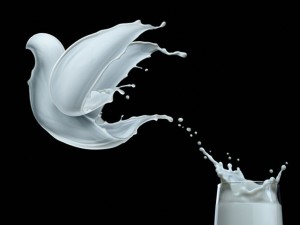 |
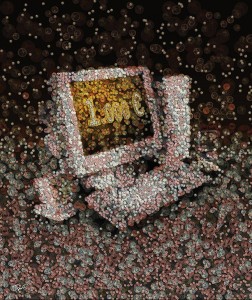 |
 |
| Promotional photo of Eli Maier and Alexandra Zaharova |
Work of Charis Tsevis | Work of Charis Tsevis |
5. Change of place
If we take an element from an environment and place to another instantly create a sense of paradox that we used to call it fiction.
If we bring Venice to Acropolis we can create an imaginative image and pique the attention.
 |
| Advertising AlpiEagles around 1998. |
Variation of the same is climate change that changed the place. Like the the New York which we have seen being drowned thousands of times.
 |
 |
6. Change of use (reassignment)
The change of use of an area immediately creates an interesting new relationship.
A typical example of reuse is of course the Mac Aquarium as a bottle or a bottle like a lamp or a bottle as a candlestick.
The change of use is extremely widespread in folk art and modern architecture because of the popularity of the concept of recycling.
 |
 |
7. Change of speed
Always seemed funny the sudden proliferation of speed a known subject. The trick was used in the old black and white films and caused laughter in the halls.
And the opposite but we like magic. Today’s technology enables us to see the traffic that our eyes can not and in fact our imagination here is testing the concept of time.
 |
 |
8. Change of scale
One of the easiest and most popular categories of mythology and film. To resize or scale the relationship between various objects directly gives a fantasy effect.
Giants King Kong, Godzilla but also,
Godzilla vs. King Kong,
Honey, I shrunk the kids.
Honey I Blew Up the Kid
The man is taller than the ant, grass, etc. And then a simple path in the garden of a house may be the ultimate adventure.
9. The monsters
Another of the tricks tried in every mythology.
In Greek mythology we had numerous samples, Minotaur, Centaurs, etc. The same in Egypt.
 |
| Minotaur |
But in the advertising as well.
In essence in this category, all the pieces are all there to break them and to recompose giving new meaning.
 |
 |
We can consider as a variant of this class visual collage. The combination of different
pieces of objects can create a new set.
So again, a mosaic can belong to this category if it is a beast …
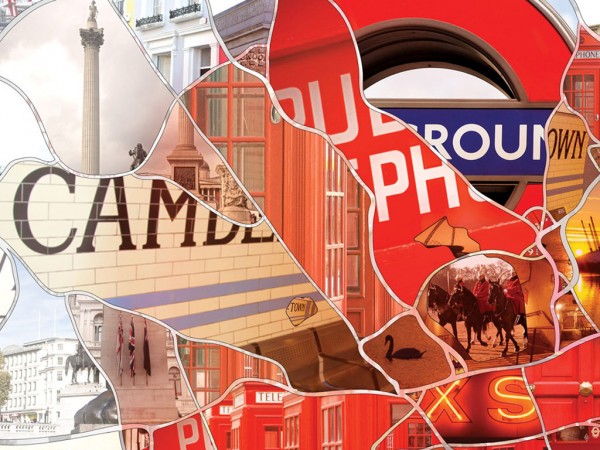 |
| by Charis Tsevis |
In this case a map of a city …
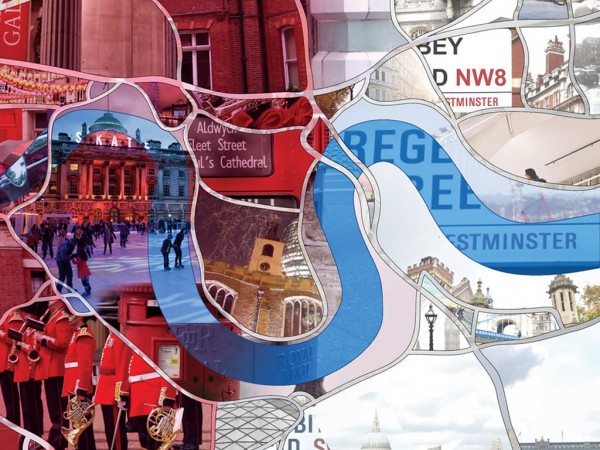 |
| by Charis Tsevis |
That may be a heart …
 |
| by Charis Tsevis |
Or a portrait …
 |
| by Charis Tsevis |
But I think one of the best examples of the series were those old Greek ads Silk Cut.
10. Change of weight
If everything is done from heavy to light and vice versa we instantly have an imaginative image. This is of course another variant of the base class that wants to overturn the fantasy world. In this category we have elephants that fly or dance or even breakdance. Also, other heavy objects that fly as a huge rock.
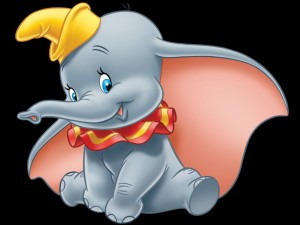 |
 |
 |
| Disney | Wursa του Daniel Firman | Rene Magritte |
Or even people can fly!
11. Recycling, a new identity
This is a variant of the previous category of change in use. This time we talk about seeking a new visual identity on an already existing object. Picasso but also the entire movement of objet trouve found in this category component of success. If you see something with new eyes? If a car is not just a car but a monkey? If a seat and a steering wheel is a bull? Or if we had a metal bird kettle and other kitchen utensils, as the work of Collin Jones Jeffrey; In the same category rests and the work of many contemporary illustrators with first and best Viktor’s Koen. Although to be precise this one rather belongs to the latest and greatest.
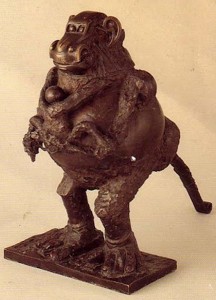 |
 |
 |
|
| Picasso | Picasso | Tea Bird by Colin George Jeffrey |
12. Relations between relations
The twelfth category is substantially more complex and more important. This combines more relationships between them. Here is every work of art since the creation based on the ability of the mind relates to objects. Here is the famous brush of Munari.
Examples are also Ingres violin of Man Ray. The visual relationship of the female body in the violin begins a whole dialogue.
In this category we borrow elements from all previous ones.
The creators of this poster for a campaign against mutated Greenpeace’s use of the material change, but in essence creating a monster by changing the identity of objects.
In this advertisement Toyo creator associates the tires with the properties of the tentacles of an octopus.
In this illustration for hard drives in some summer months RAM Charis Tsevis changed the material of a hard disk to make you melt as ice-collage by adding a stick.
Here Charis created a visual relationship between the famous Sydney Opera House and an array of high end speakers.
While here we use some objet trouve, some data objects and create a new relationship.
One of the most favorable is this illustration of the Marcos Sorensen for the Au Juice. It’s the Fred Astaire and Ginger Rodgers or rather more of a ginger.
And maybe one of the best is perhaps because it is a simple but very honest representation.
It is an anti-war poster made in 1990 by Israeli designer Eytan Hendel. We are at war in the Persian Gulf and that is the time that Israel lives in fear of missiles from Iraq. The 6 years old Jonathan has learned to use his mask. Natural he wants to protect his teddy bear so he creates and paints one for that.
With simple, yet imaginative true tragic way the poster shows how the war is no game or what war does in games.
 |
| Antiwar poster from Israel in 1991. |
To conclude this presentation we invite you to experiment but in a way that honors the technique and its creator, the Bruno Munari. He concluded the imagination to say that these groups and techniques can certainly be replicated in the laboratory is not a panacea. If we copy a technique, even if we become masters, but we have nothing to say, then we will not have succeeded.
But be careful here! Each technique such as the one we presented, is extremely interesting and valuable for us as creative people. We can practice and create with the help of those categories, interested works and why not masterpieces.
What Bruno Munari would like us to do is to see in a different way each time and each object. To reduce the ego and work with nature through the way to creation.
Only a line and little facetious mood and then all come to life. And Fantasy!























